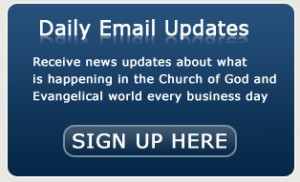Churches Turn to Electronic Giving, Survey Finds
As consumers in the United States shift increasingly to online banking and bill payment, their electronic financial habits are spilling over into the church.
A recent study by LifeWay Research found that 14 percent of all American Protestant churches offer online giving.
The survey of 1,003 Protestant congregations was conducted in September 2010 and sponsored by LifeWay’s Digital Church partner ServiceU. It found that large churches are most likely to offer online giving and that for the most part, electronic tithes and offerings are a recent development.
A majority (55 percent) of churches with average worship attendance of 500 or more offer online giving, along with 26 percent of congregations with attendance of 200 to 499. In contrast, just 9 percent of churches with 100 to 199 attendees offer online giving, as do 7 percent of churches with 50 to 99 attendees and 4 percent with less than 50 attendees.
Two-thirds (66 percent) of churches with online giving have offered it for two years or less. That includes 26 percent who have offered it for about two years, 24 percent who have offered it for less than one year and 16 percent who have offered it for about one year.
Nine percent of churches offering online giving have offered it for about three years, 4 percent for about four years and 13 percent for more than four years.
“Fewer and fewer Americans cash their paychecks or carry a checkbook,” said Scott McConnell, director of LifeWay Research. “Some churches are finding that the payment preferences of enough of their congregation have changed to warrant putting an offering plate online in addition to passing them in their worship services.”
The survey also found that churches in large cities are more likely to offer online giving than congregations in any other setting. A full 28 percent of churches in large cities have online giving. Yet only 15 percent in small cities, 12 percent in suburbs and 6 percent in rural areas have adopted the practice.
According to data from the Federal Reserve, the trend toward electronic transactions in churches mirrors a trend in American culture at large. By 2007, 53 percent of U.S. households used online banking. That represented a marked increase from 4 percent in 1995. Similarly, by 2007, 80 percent used direct deposit for income or benefits payments, up from 53 percent in 1995.
Still, the number of churches offering online giving lags behind the overall trend toward electronic transactions. Although 78 percent of churches have a website, 86 percent of all congregations do not offer online giving.
Tim Whitehorn, president and CEO of ServiceU and sponsor of the study, said online giving can help church members be more consistent in their giving through automatic withdrawals from their bank accounts or credit cards.
“Despite whatever our best intentions are of trying to remember to write a check — whether it’s every Sunday, once a month or twice a month, how many gifts a year does the average giver forget to give?” he said. “Consistent giving. That’s what we believe online giving provides.”
“I can only imagine 100 years ago — when people thought you should bring cash and put that in the offering plate — that there were people who didn’t think you should write a check, you should just put cash in the offering plate,” Whitehorn said. “Things change. Technologies change, but I think the spirit of giving is what’s important.”
Methodology: LifeWay Research conducted a phone survey among a stratified, random sample of Protestant churches Sept. 8-20, 2010, interviewing 1,003 staff members most responsible for making decisions about the technology used in their church. Responses were weighted to reflect the natural size distribution of churches. The sample provides 95 percent confidence that the sampling error does not exceed ±3.2 percent.
(Source: Christian Newswire)




